Shim Soo-jin didn’t like heavy topics, but when she saw the images of the Chernobyl Nuclear Power Plant in Ukraine through a television documentary, she was “hooked.”
The ravaged, desolate building and its surroundings were so mind-boggling that she decided to tour the place while she was a university student. Having visited the place three times since 2015, she has filmed one of her trips and talked about her experiences on radio and at seminars.
“I felt so many things there, sadness, happiness at finally being there and even anger at what had happened,” Shim, who is now a travel agent, told The Korea Herald. “The most striking thing was witnessing what our world would be like if it was destroyed by weapons of mass destruction.”
The ravaged, desolate building and its surroundings were so mind-boggling that she decided to tour the place while she was a university student. Having visited the place three times since 2015, she has filmed one of her trips and talked about her experiences on radio and at seminars.
“I felt so many things there, sadness, happiness at finally being there and even anger at what had happened,” Shim, who is now a travel agent, told The Korea Herald. “The most striking thing was witnessing what our world would be like if it was destroyed by weapons of mass destruction.”
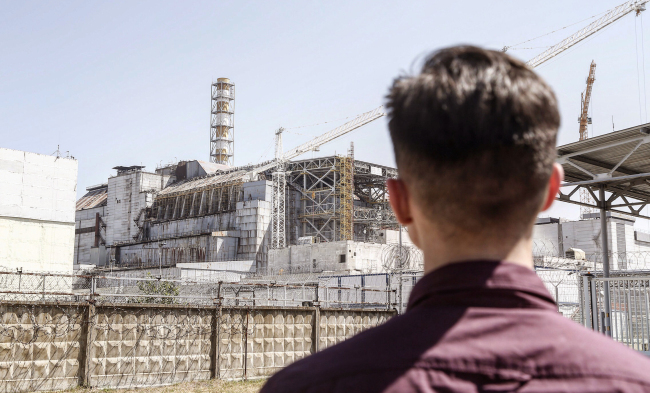
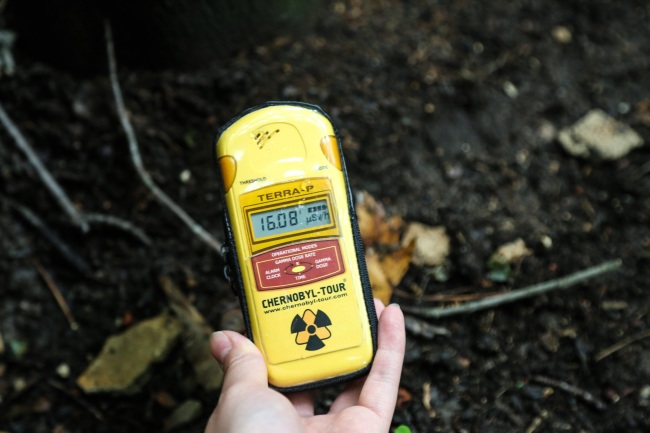
As she walked around the facility, memories of the images of the town of Pripyat near the plant -- both before the accident, with smiling residents, and afterward, with Soviet soldiers decontaminating the area -- sent a chill down her spine.
Shim said she was fascinated by the flourishing wildlife within the 30-kilometer radius exclusion zone, where wild horses, foxes and dogs roamed around, oblivious to the radiation left by the plant’s explosion on April 26, 1986.
“The animals looked so healthy, innocent and innocuous,” Shim said. “I also met few surviving residents of the town, known as ‘Samosely’ in Russian and Ukrainian, which means ‘self-settlers.’ They were mostly old folks who didn’t leave their homes out of emotional attachment and livelihoods.”
They seemed to be unconcerned by the radiation and sustained their lives toiling the land, Shim said, adding such ruination ought never to repeat itself.


Marking the 30th anniversary of the tragedy last year, a steel containment structure named the “New Safe Confinement” replaced the hastily built and aging sarcophagus that protected and contained Reactor No. 4. Internationally funded and managed by the European Bank for Reconstruction and Development, and overseen by a French-led consortium Novarka, a new $1.4 billion arched steel casing now covers the reactor.
Mentioning her visit to the Auschwitz-Birkenau Memorial and Museum in Poland dedicated to the Holocaust victims, Shim said many more people are taking interest in “dark tourism” to places like Chernobyl.
“People have asked me whether it’s safe to travel there,” she said. “I couldn’t dare say it’s safe but what I can say surely is that you will be swept up by many feelings at Chernobyl.”
Beer driven travel
Kim Sun-joo, a freelance travel writer, has been touring the world by train to sample regional beers.
“I think everyone has the romantic dream of drinking beer while looking out the window of a moving train,” she said in an interview. “There’s nothing more appeasing and idyllic than sipping beer on a night train.”
Kim, who plans to publish a book called “Asian Beer Tour” this summer, said Asian beers are “light, fresh, fizzy and full of hops,” reflecting the region’s hot and humid climates. Lagers match the greasy cuisines well, she said, adding that craft beers were increasingly produced in microbreweries.
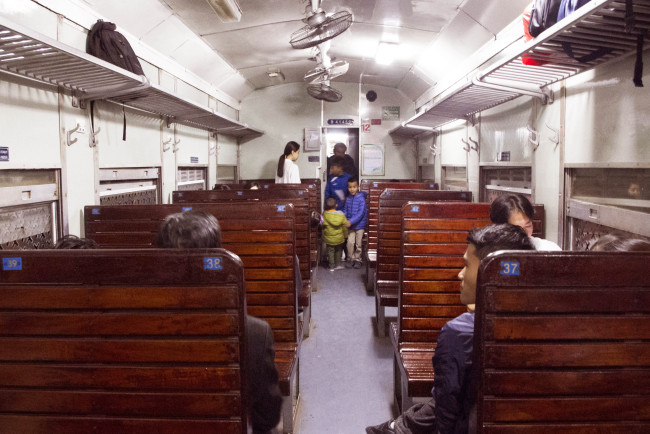
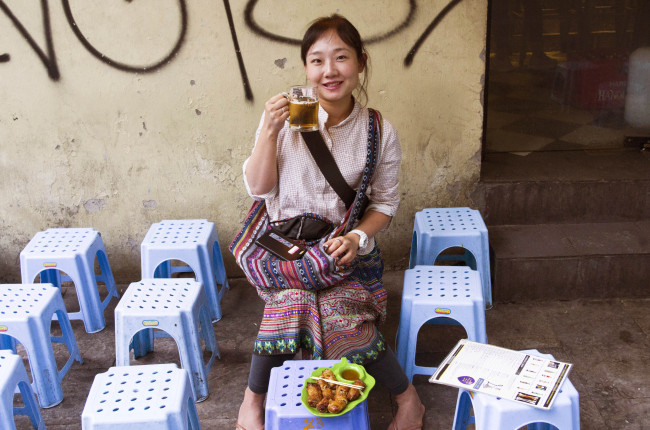
Sri Lanka and its Lion Beer are popular among “railway maniacs.” Burmese take pride in their Myanmar Beer and Mandalay Beer, which have won international accolades. And in Vietnam, people can slake their thirst with 333 Beer, Bao Viet Beer, Hanoi Beer and Lao Cai Beer, according to Kim.
“Tsingtao is an excellent beer,” she said, noting that in the city of Qingdao in China, beer flows right from the factory with an unparalleled freshness and taste. Many countries’ colonial legacies have enriched the chemistry and history of brewing, she added.
In Korea, Kim has been to Busan, Geojedo, Wando, Haenam, Hongcheon and Cheongju in search of locally brewed “makgeolli,” a traditional rice-based brew.
With more and more Koreans opting to eat and drink alone -- the newfangled phenomena called “honbap” and “honsul,” respectively -- the same trend is spreading to travel, she pointed out. “Many Korean women like to travel solo these days. People want to live autonomously, and savor their untethered privacy.”
Finding happiness in Bhutan
Koh Geun-young lived in Indonesia and Italy for over 10 years, before coming to Korea to work in the finance industry. She decided to take a break from her career and hit the road for unique destinations while she still can. She visited the Kingdom of Bhutan, a small landlocked country in the Himalayan mountain range between China and India and that is often identified with happiness.
“I used to manage my clients’ assets worth tens of millions of dollars, but I saw that happiness didn’t always come with wealth,” she said. “I started to wonder where happiness comes from, and after reading a travel essay on Bhutan, made up my mind to go there.”

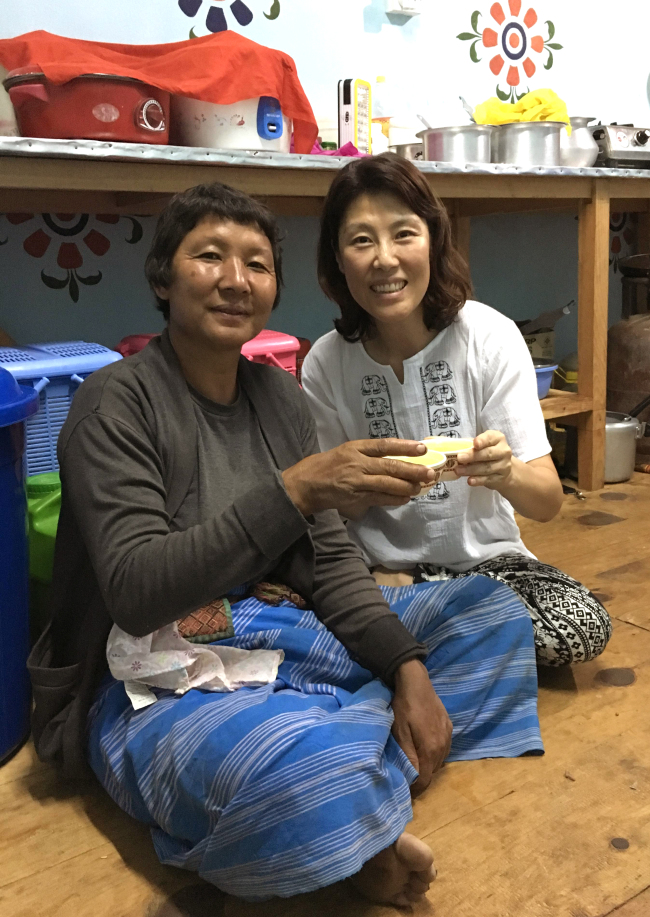
Koh visited capital Thimphu, the district of Bumthang, famous for ancient temples on mountain ridges, and the district of Paro in the west for trekking. As opposed to lodging at a hotel, Koh stayed with a local family to experience its humble way of life.
“I interacted with the homeowner’s family round the clock,” she said, citing doing the groceries, milking the cow and making cheese, cooking dishes, dining and drinking tea together.
“The house lady was cooking lots of food to serve visitors at the local Buddhist temple. This kind of charitable spirit used to exist in Korea. It made me wonder whether Koreans have lost touch with our native culture in the pursuit of money.”
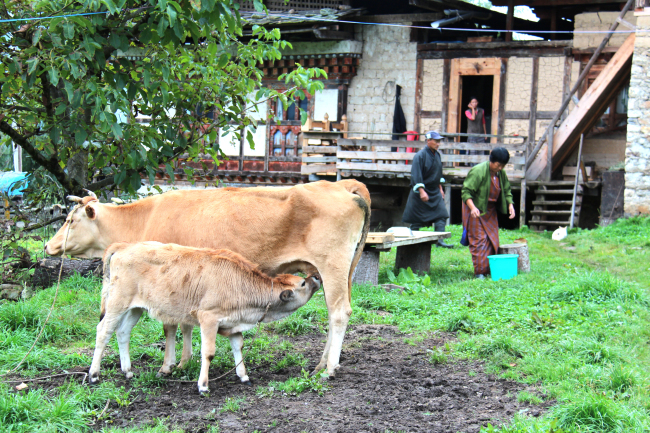
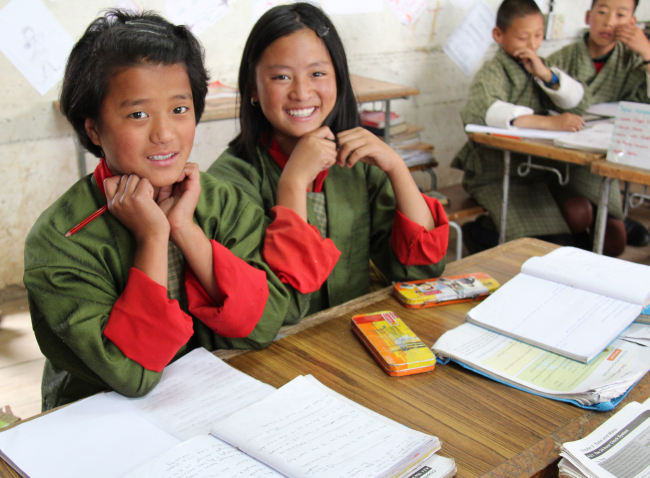
In school classrooms, students seemed to enjoy learning stress-free, asking many questions and smiling. The apparently “benevolent” policies of King Jigme Khesar Namgyel Wangchuck enabled fair distribution of medical and educational services across all parts of the country, according to Koh.
“There are not many people left behind,” she commented, noting that up to 40 percent of the revenues collected from tourism go to public welfare.
“Like Bhutanese, Koreans used to have hope in the 1960s and ’70s, despite being poor,” she said. “But in the process of economic development, we have come to find our happiness in the eyes of others. What I learned is that you should be happy with what you have. It’s a simple truth, but nevertheless a valuable one.”
By Joel Lee (joel@heraldcorp.com)
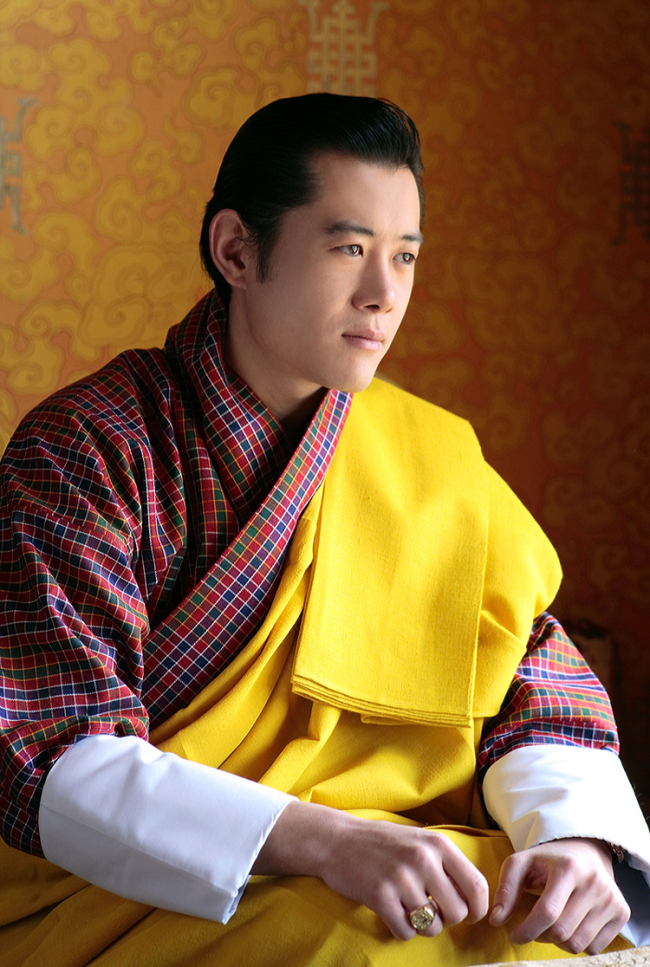
-
Articles by Korea Herald








![[KH Explains] Hyundai's full hybrid edge to pay off amid slow transition to pure EVs](http://res.heraldm.com/phpwas/restmb_idxmake.php?idx=644&simg=/content/image/2024/04/18/20240418050645_0.jpg&u=20240419100350)







![[From the Scene] Monks, Buddhists hail return of remains of Buddhas](http://res.heraldm.com/phpwas/restmb_idxmake.php?idx=652&simg=/content/image/2024/04/19/20240419050617_0.jpg&u=20240419175937)

![[KH Explains] Hyundai's full hybrid edge to pay off amid slow transition to pure EVs](http://res.heraldm.com/phpwas/restmb_idxmake.php?idx=652&simg=/content/image/2024/04/18/20240418050645_0.jpg&u=20240419100350)

![[Today’s K-pop] Illit drops debut single remix](http://res.heraldm.com/phpwas/restmb_idxmake.php?idx=642&simg=/content/image/2024/04/19/20240419050612_0.jpg&u=)